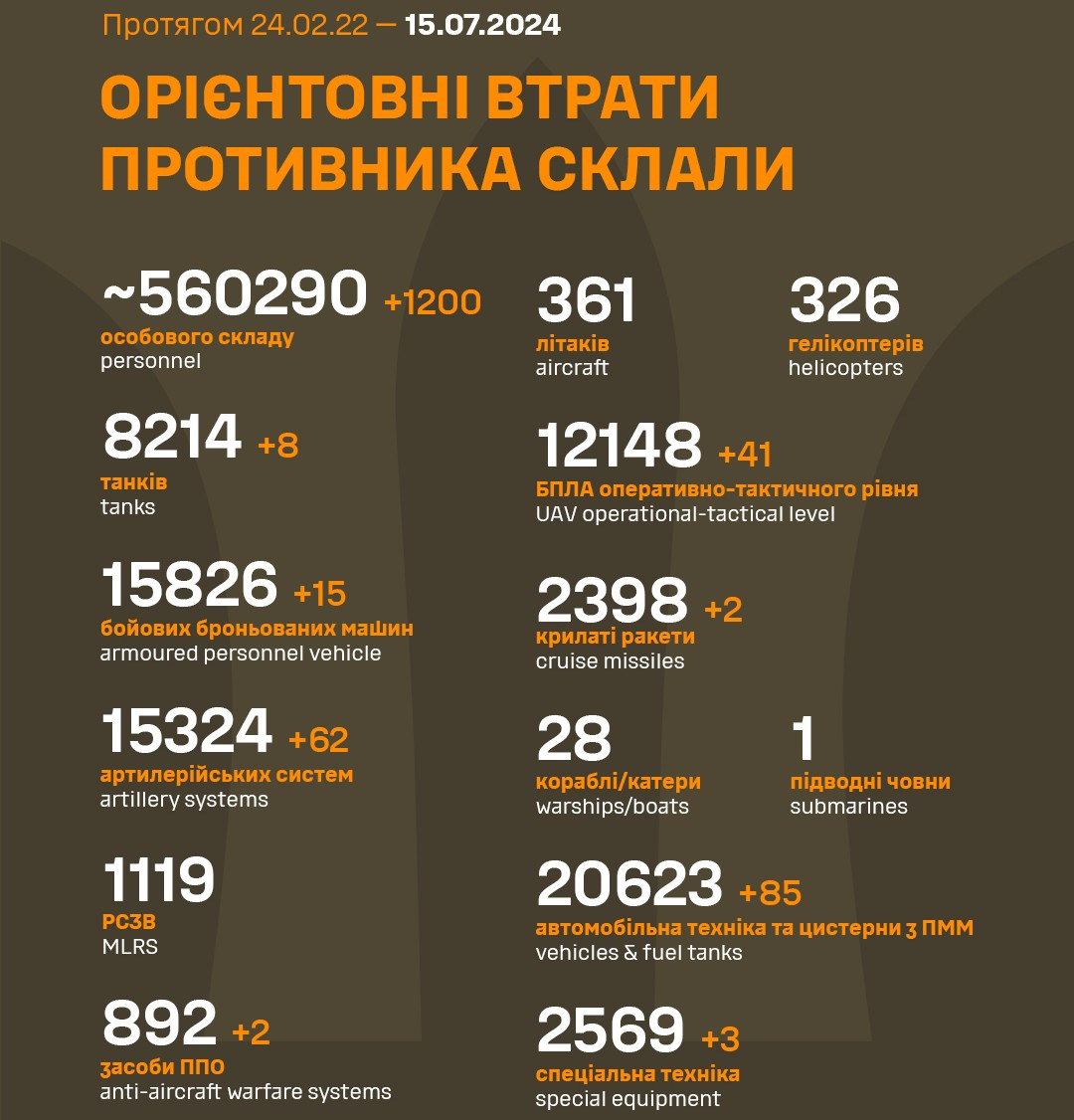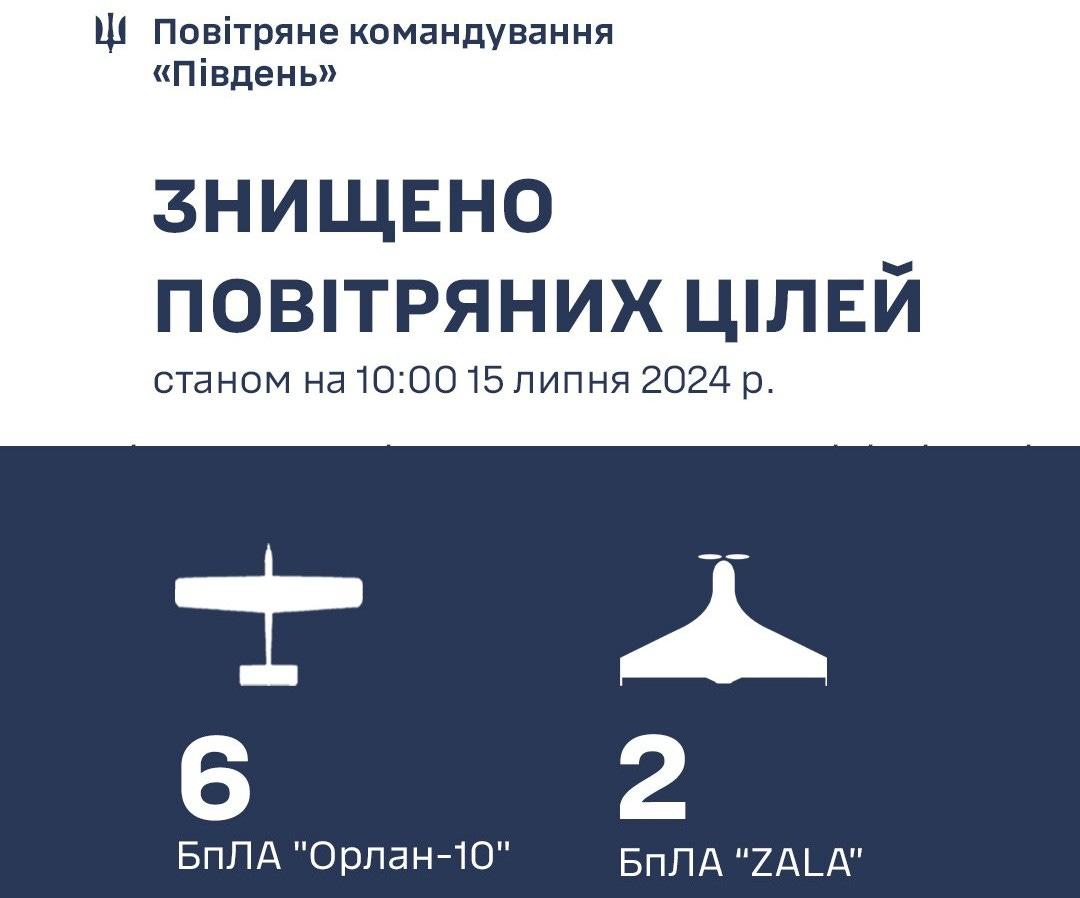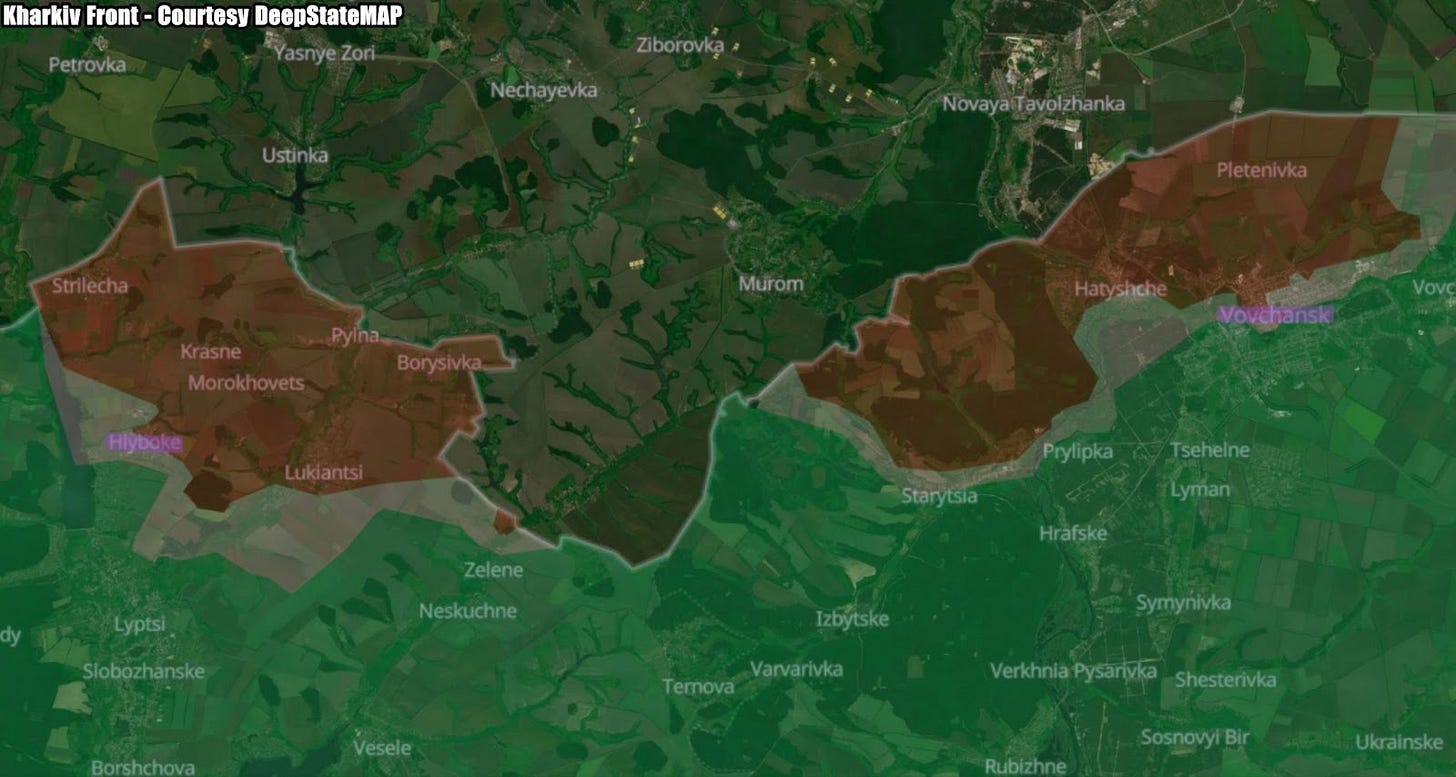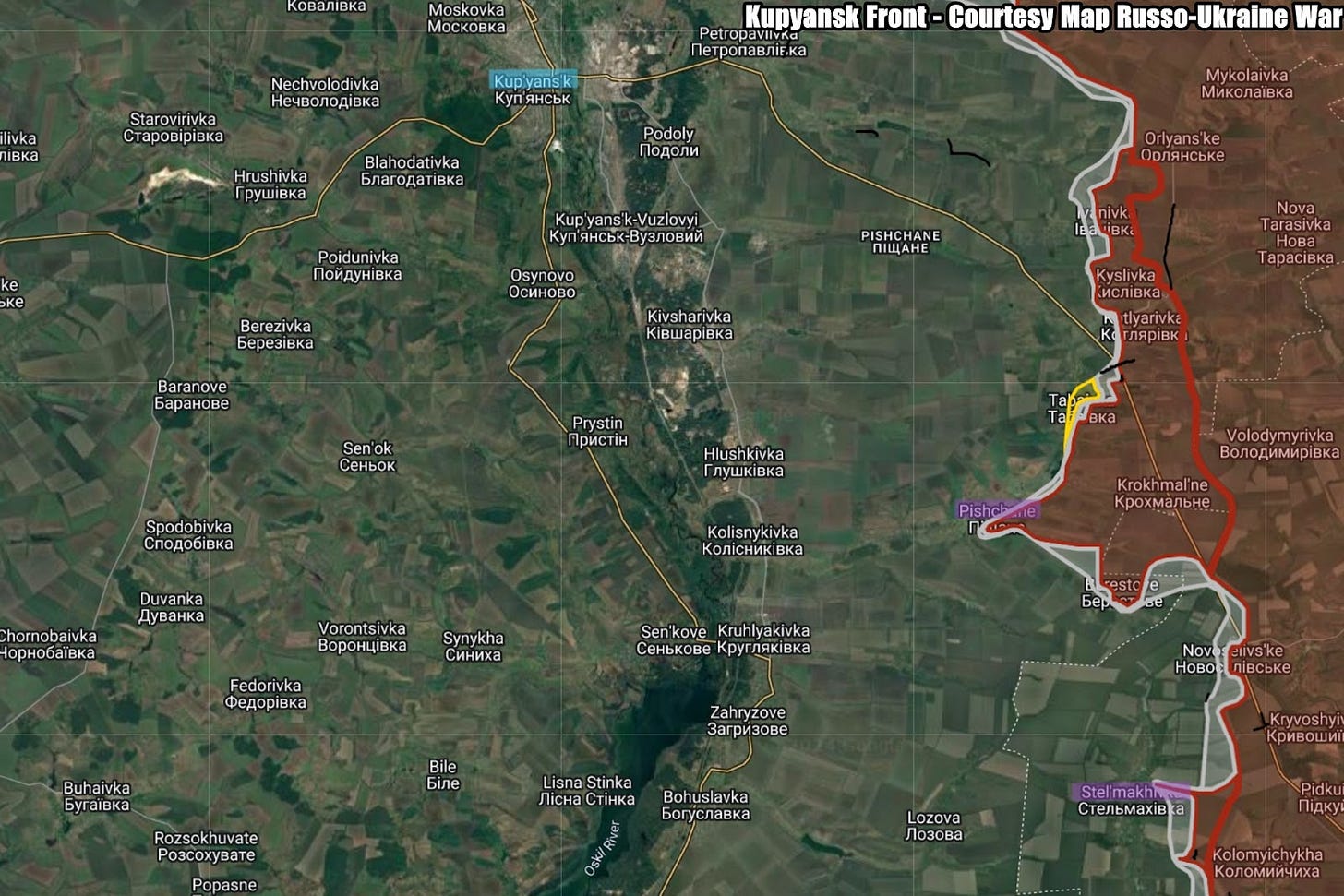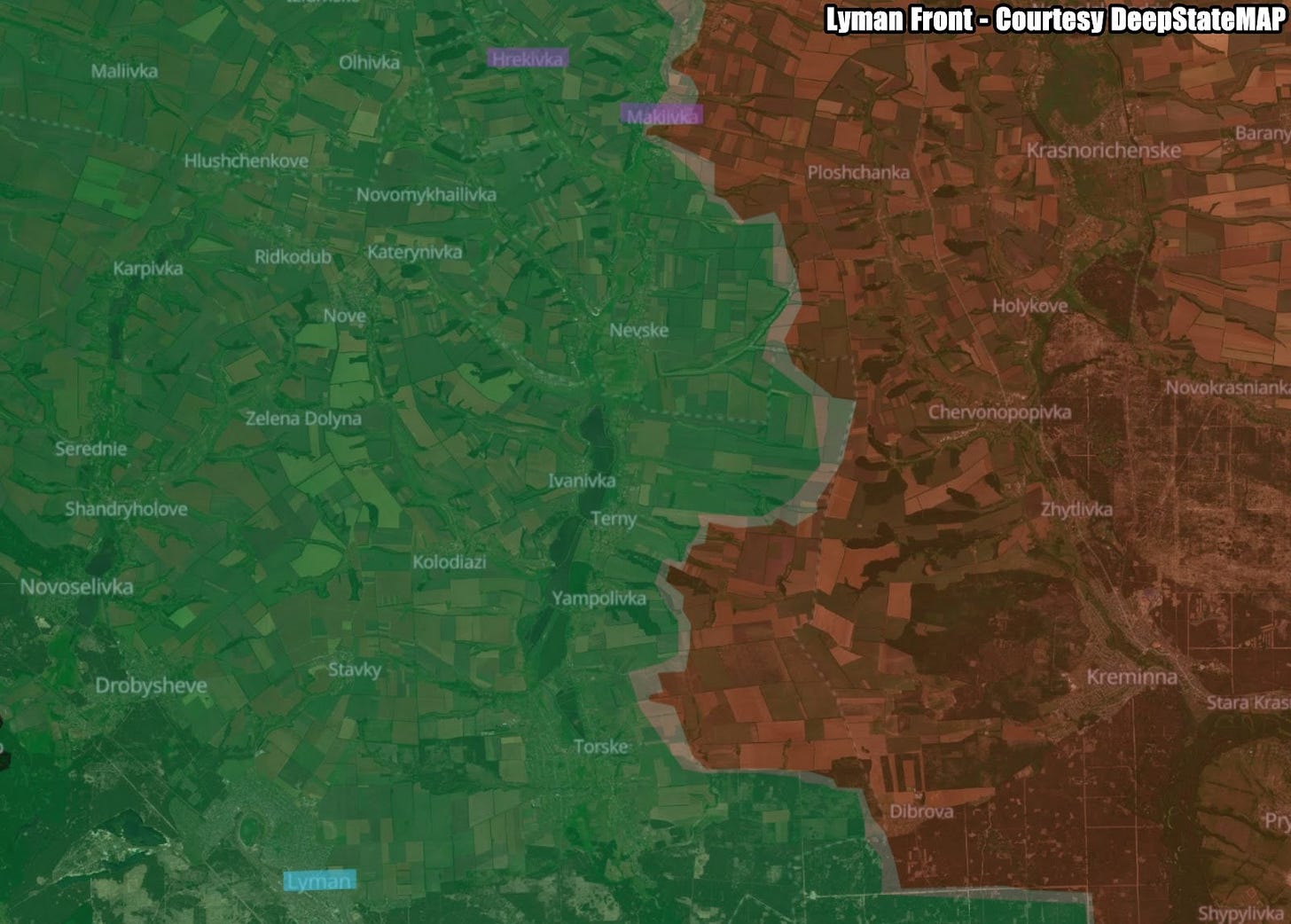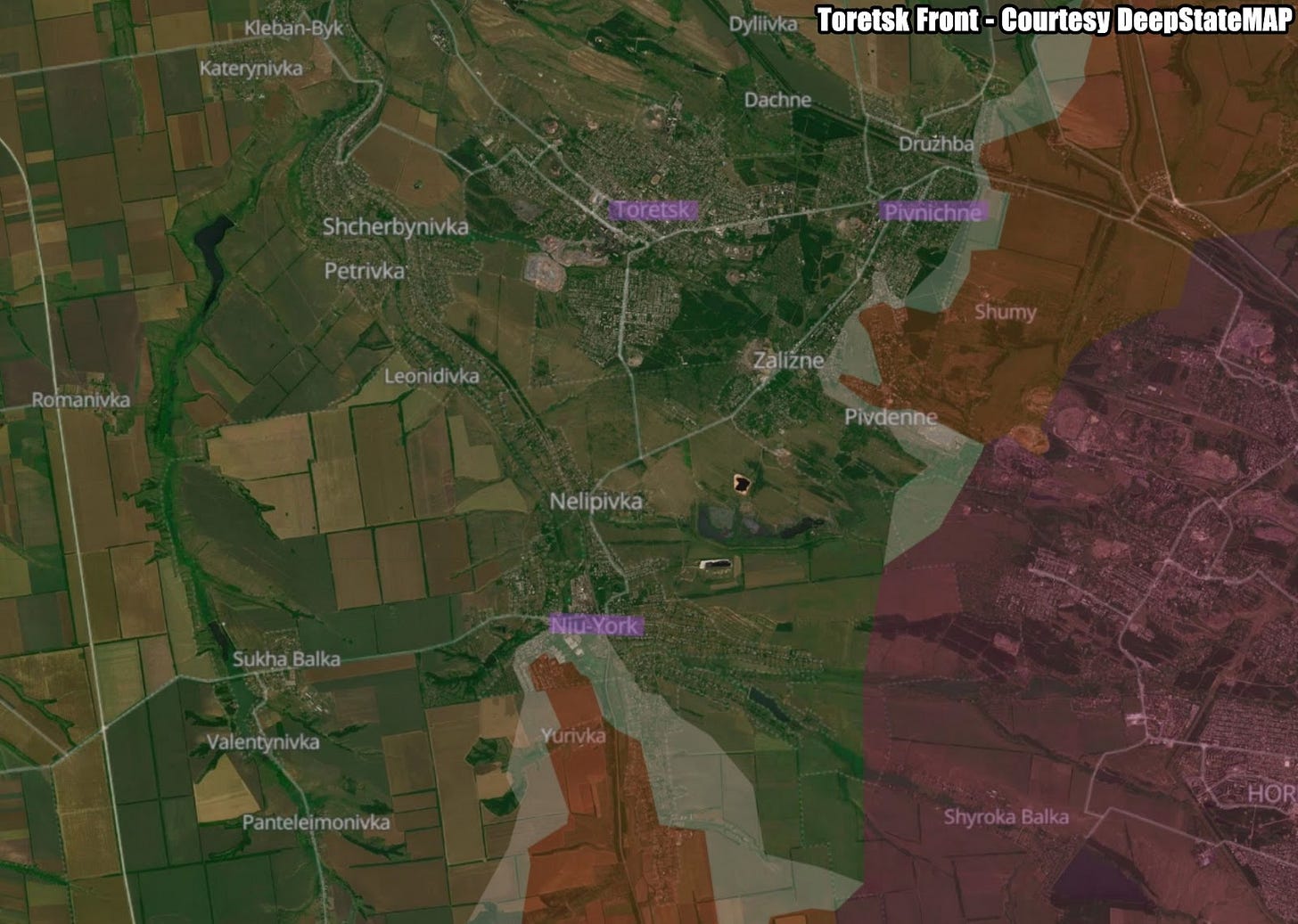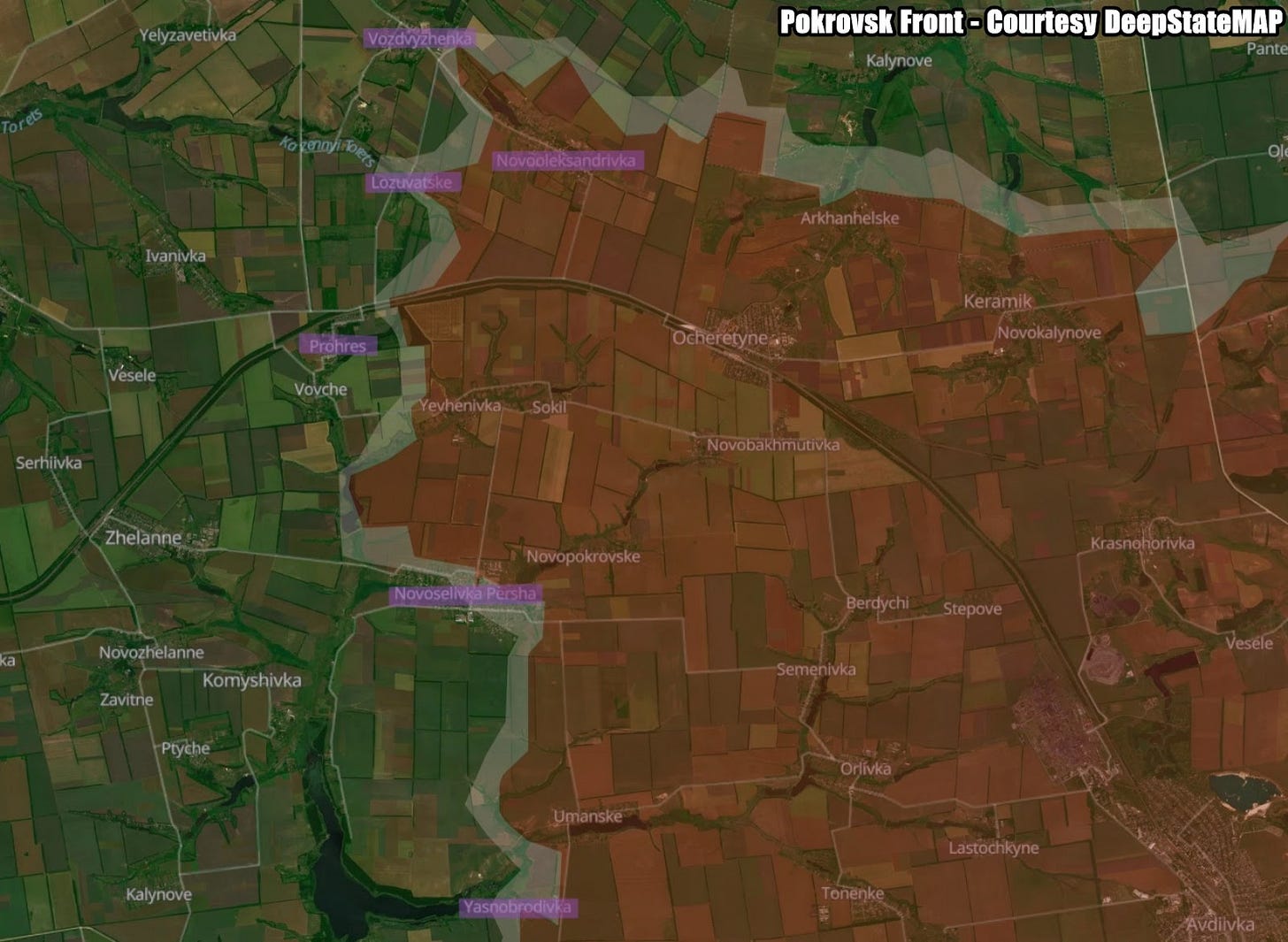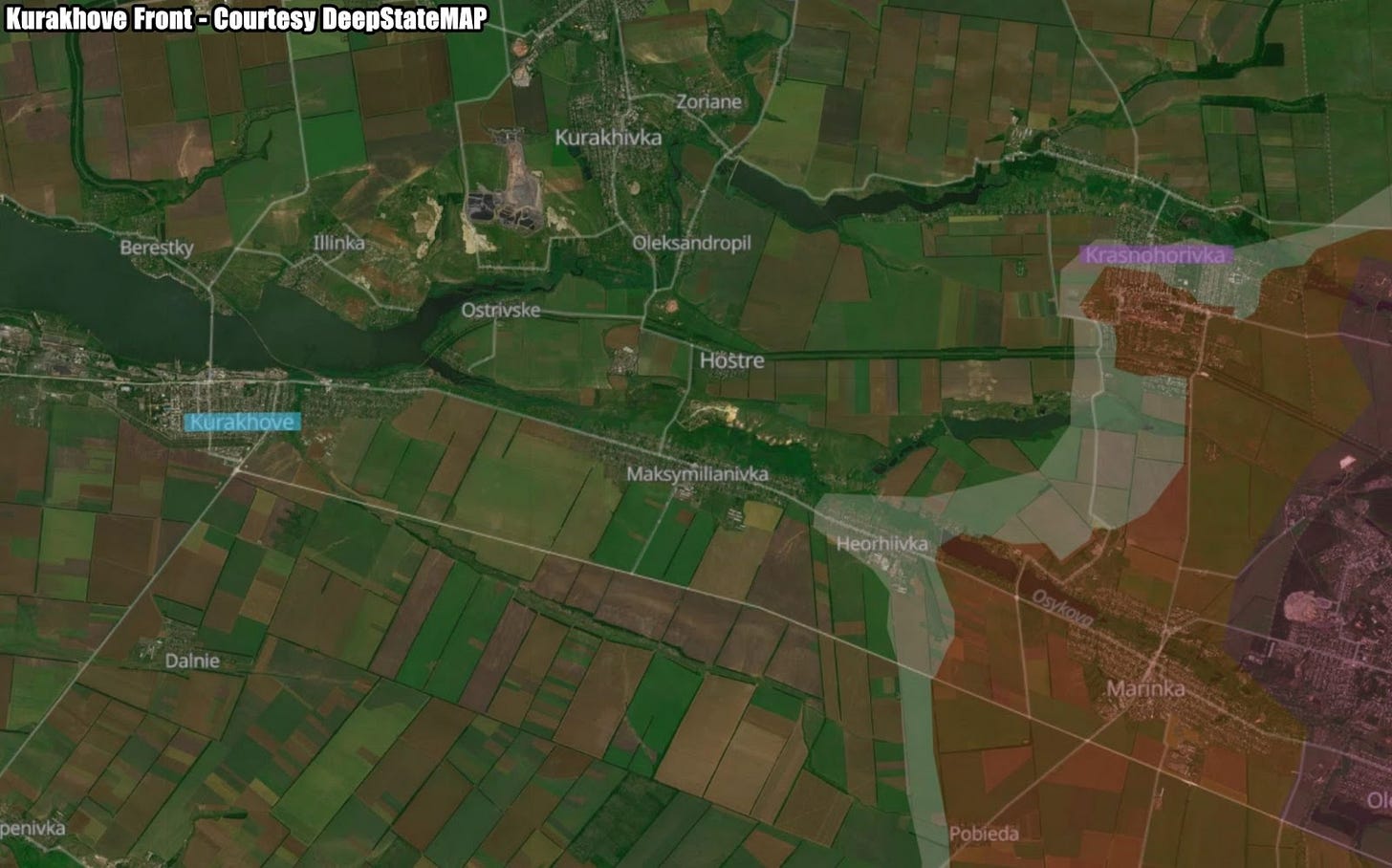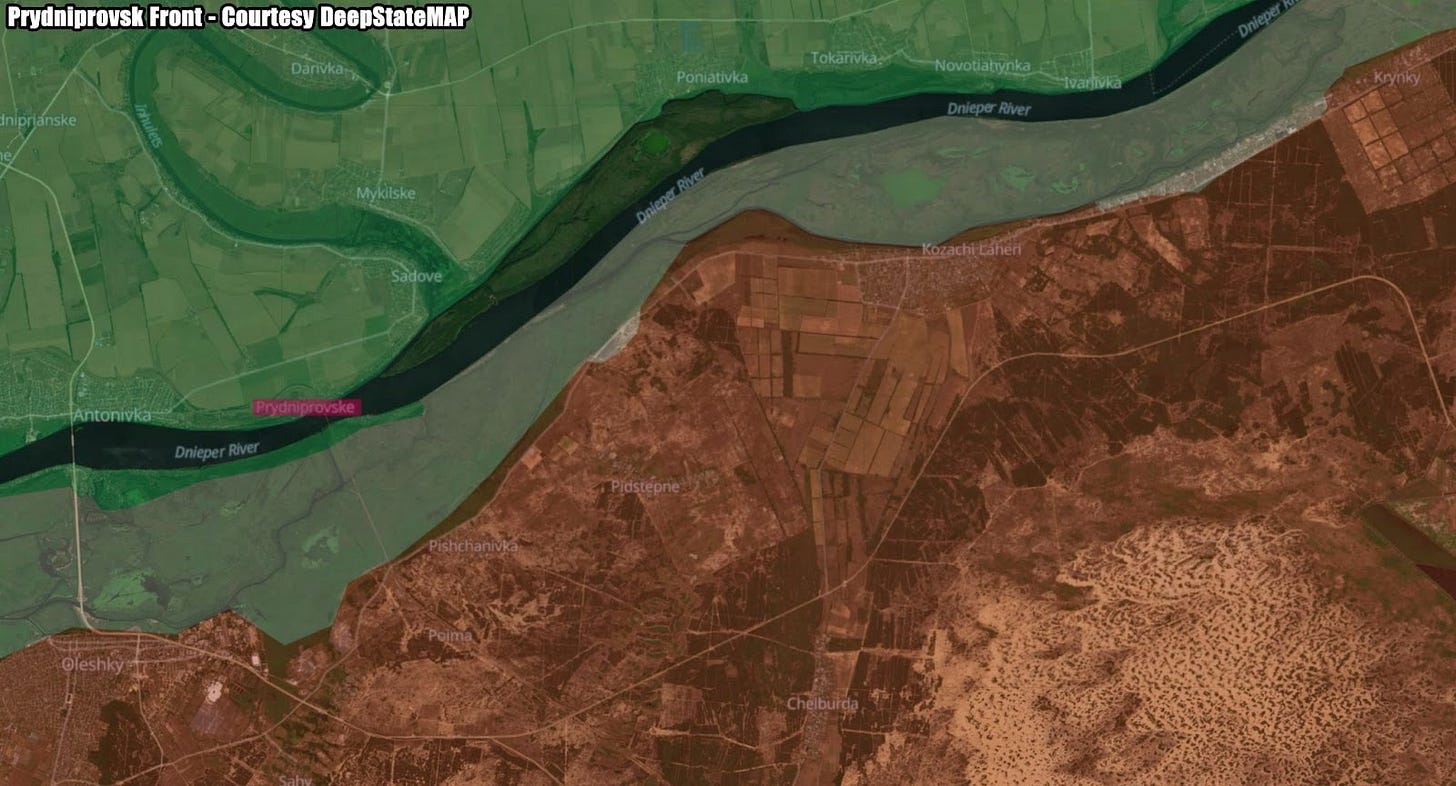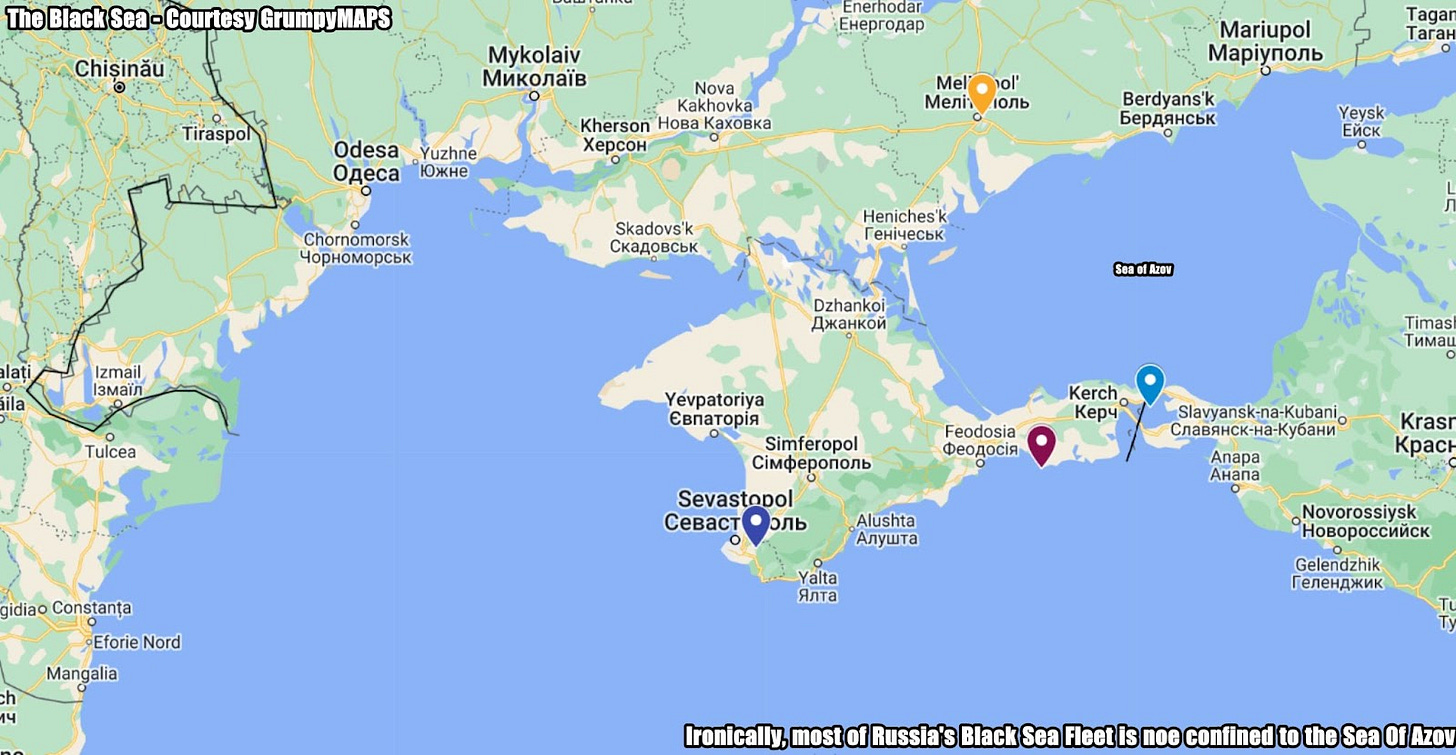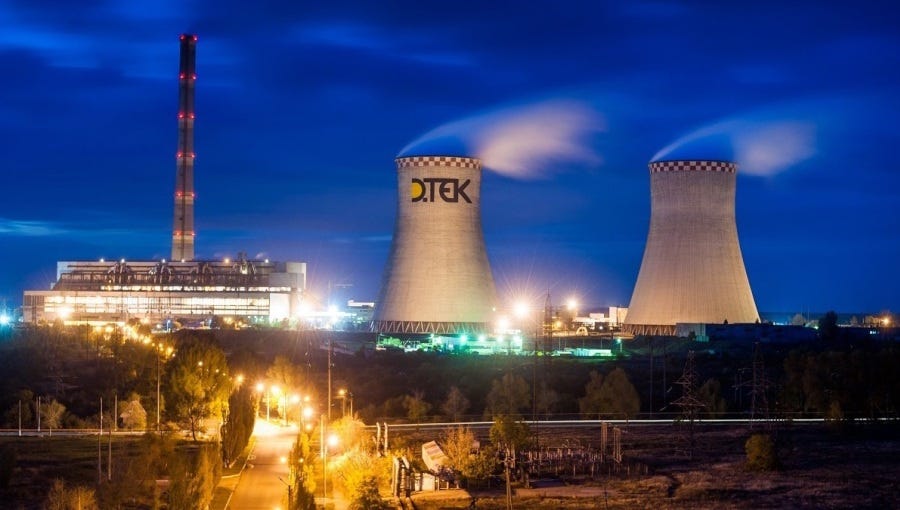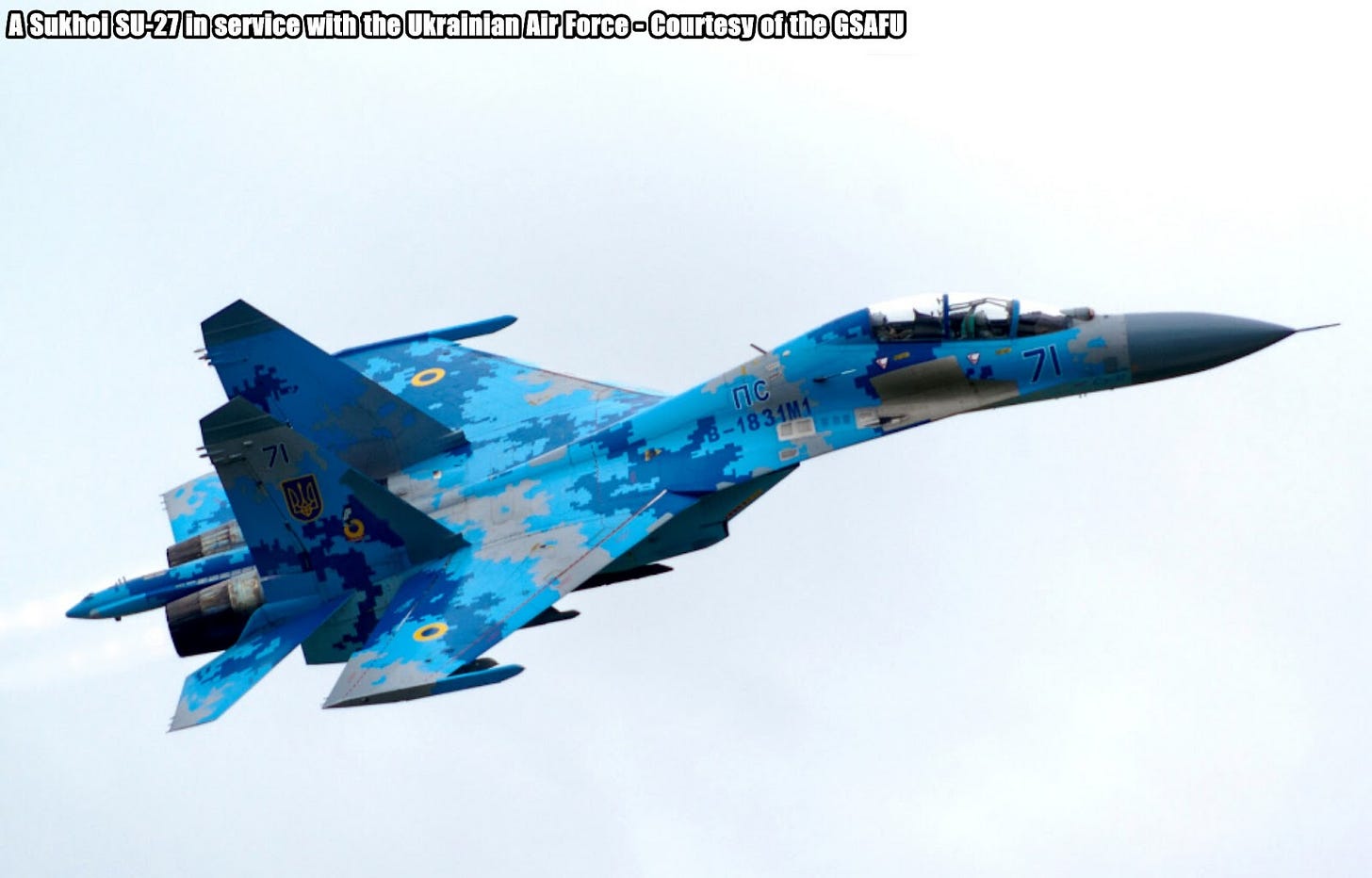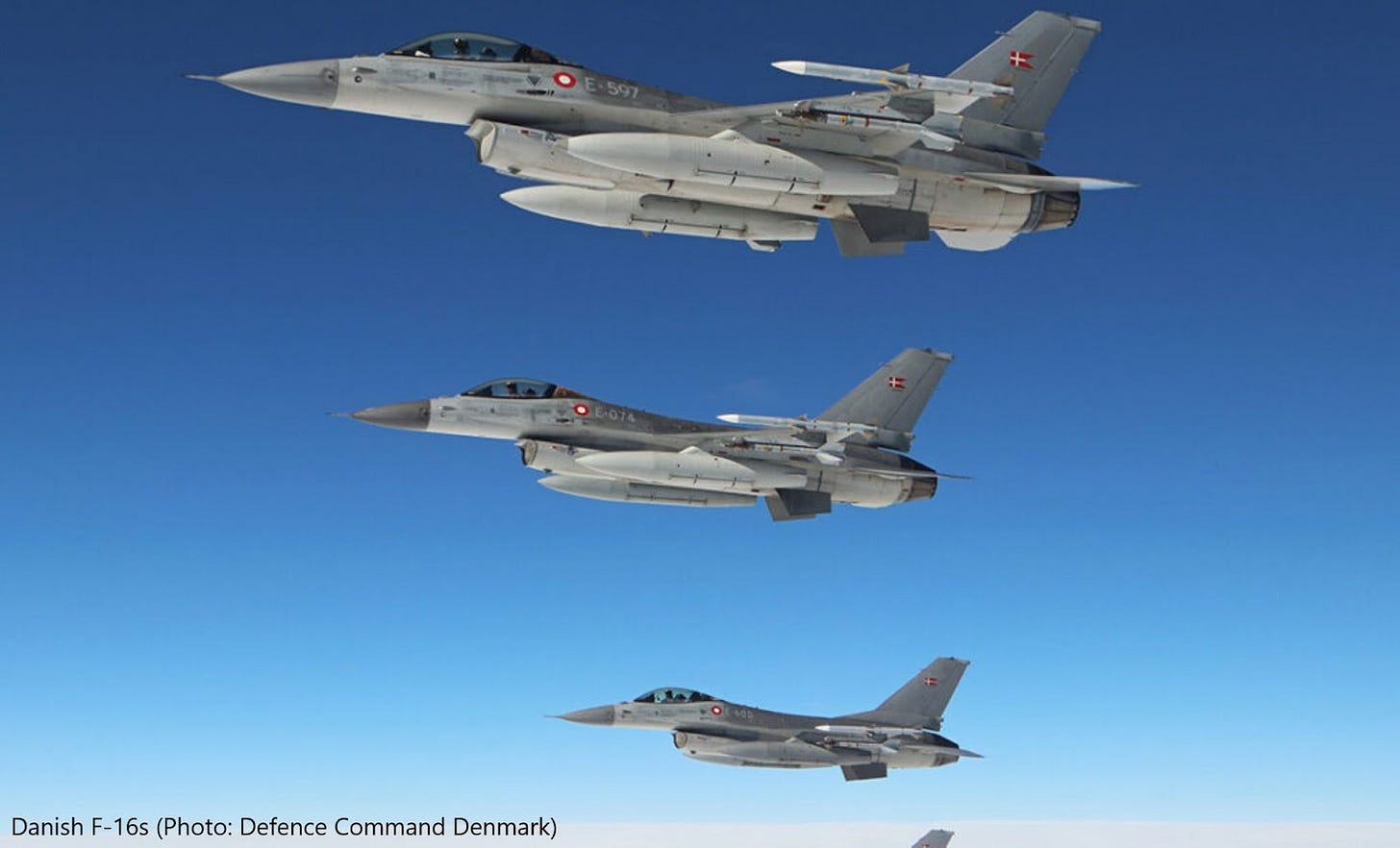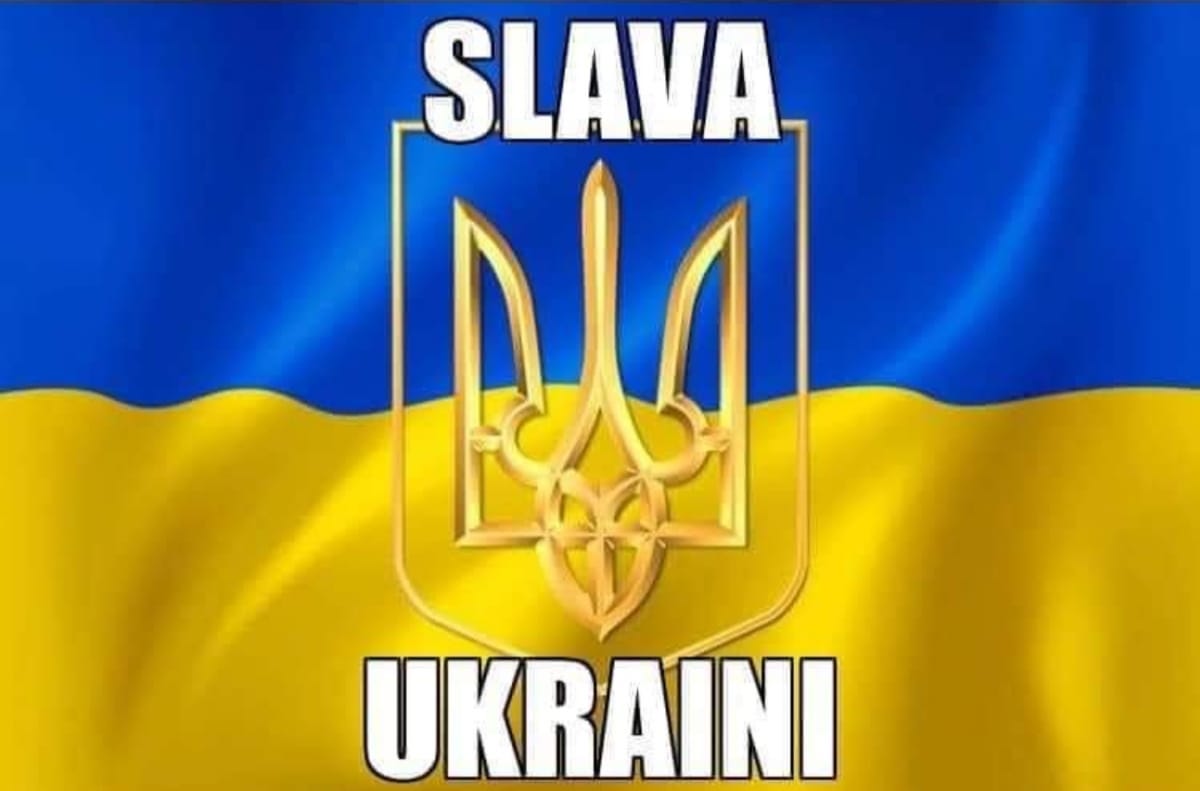Slava Ukraini! In early 2022 I began a Telegram channel aggregating news from a number of sources daily on the war in Ukraine. Since June 2023 I have provided a daily draft for the Ukraine War Brief Podcast collecting news from over 60 sources daily, much of which forms the basis of the script. While the Podcast is on hiatus I will make this Draft available here both on my own Substack and The People’s Media for those who wish to keep up with events on a daily basis.
ALONG THE CONTACT LINE
GSAFU Morning Report
The General Staff of the Armed Forces of Ukraine in its Operational Information update at 22:00 on July 14 stated that day 872 of the full-scale invasion of the Russian Federation against Ukraine was about to begin.
During the past day, 89 combat engagements took place. Over the past 24 hours, the enemy carried out 3 missile stikes, 43 air strikes, 532 drone strikes and 3,267 artillery strikes across the positions of Ukrainian forces.
At the same time, Ukrainian soldiers continue to inflict losses in manpower and equipment on the occupying troops, exhausting the enemy along the entire front line and continue to disrupt the plans of Russian occupiers to advance deep into the territory of Ukraine.
Air Force Daily Report
During the past day, on July 14, 2024, as part of countering enemy reconnaissance in the south, 4 enemy UAVs were destroyed - three - "Orlan-10" and one "ZALA".
The Khortytsia operational-strategic group
(Responsible for the northeastern part of Ukraine. )
Kharkiv axis: The enemy conducted 3 assault actions supported by aviation, in the areas of Hlyboke and Vovchansk.
Russian troops’ offensive in Kharkiv region failed, - Zelenskyy
President of Ukraine Volodymyr Zelenskyy during a press conference Russia forces failed in their offensive in the Kharkiv region.
"We used some things (the ability to hit the territory of the Russian Federation - Ed.) along the border. I believe that in the Kharkiv region, people have stopped, or the Russian Federation's non-humans have stopped. Their offensive failed in the Kharkiv region. All experts admit that Russia's offensive on Kharkiv failed. I would say that it was stopped by our soldiers and appropriate weapons," the Head of State said.
Kupyansk axis: The enemy tried to advance 3 times against Ukrainian positions near Pischane and Stelmakhivka. The situation is under control.
Lyman axis: In this sector today, the enemy was less active. Russian forces attacked 8 times in the area of Hrekivka and Makiivka. None were successful.
Siversk axis: Russian forces carried out 8 assaults in the vicinity of Bilhorivka, Sprine, Vyimka and Rozdolivka. The situation is under control.
Kramatorsk axis: The enemy attacked 6 times near the settlements of Hyrhorivka, Chasiv Yar, Ivanivske and Andriivka.
Toretsk axis: The situation is tense in this sector. Russia attacked 12 times near Pivnichne, Toretsk and Nui-York.
The Tavria operational-strategic group
(Responsible for the central-eastern and southeastern part of Ukraine.)
Pokrovsk axis: The highest intensity of combat remains in this sector. The enemy conducted 40 attacks against Ukrainian defences in this area over the last day in the vicinity of Vozdvizhenka, Novooleksandrívka, Lozuvatske, Prohes, Novoselivka Persha and Yasnobrodivka.
Kurakhove axis: The enemy 5 times unsuccessfully attacked our positions near Krasnohorivka
Vremivka axis: The Russians conducted 5 offensive actions near Urozhaine and Vodiane
Orikhiv axis: The situation has not experienced significant changes.
The Odesa operational-strategic group
(Responsible for Kherson, Qırım, (also known as Crimea) and the Black Sea.)
Prydniprovsk axis: In this direction, the situation has not changed significantly. The enemy conducted 2 unsuccessful assault actions on the left bank of the Dnieper.
Russia withdraws its last patrol ship from Crimea
Ukrainian Navy reports that Russia’s navy has withdrawn their last patrol ship from occupied Crimea, marking a significant reduction in their naval presence in the occupied region. Ukrainian Navy spokesperson Dmytro Pletenchuk announced this development on 15 July
“The last patrol ship of the Russian Black Sea Fleet is leaving our Crimea right now. Remember this day.”
This withdrawal comes in the wake of substantial losses suffered by the Russian Black Sea Fleet in recent months.
With Ukraine’s Navy virtually non-existent, Ukraine employs missiles and the newly-created fleet of various maritime suicide drones to counter Russia’s dominance in the Black Sea. These tactics led to the destruction or severe damage to at least 17 vessels of Russia’s Black Sea Fleet, including the sinking of the Moskva, the Fleet’s flagship, early in the all-out war.
To avoid Ukrainian sea-borne attack, Russia largely moved its Black Sea Fleet from Sevastopol to Russia’s Novorossiysk, where it is improving infrastructure to support long-term basing, according to UK intelligence.
As of 17 June, Pletenchuk had reported that one-third of the fleet’s ships had been disabled. He also noted that Ukrainian defense forces continued to target and destroy some of these vessels even after they had undergone repairs.
Earlier, Vice Admiral Oleksii Neizhpapa, Commander of the Ukrainian Navy, said that no Russian warships have entered the northwestern part of the Black Sea since 2023.
TEMPORARILY OCCUPIED TERRITORIES
Nothing to report.
THE HOME FRONT
Ukraine Heatwave pushes electricity consumption to maximum
The "anomalous heatwave" in Europe and Ukraine is pushing the electricity consumption in the country to its maximum level, state-owned energy operator Ukrenergo said on July 15. The Kyiv Independent reports.
Ukrainian power plants lack the capacity to cover the growing demand, necessitating scheduled blackouts, Ukrenergo noted.
The record-breaking heatwave that has engulfed Ukraine is expected to continue the following week, with maximum temperatures exceeding 40 degrees Celsius (over 104 degrees Fahrenheit).
This has led to an increased use of electricity, namely for air conditioning, and put an even greater strain on Ukraine's energy grid, already heavily battered by Russian aerial strikes.
The weather broke three records in Kyiv in a single day on July 11 – the highest minimum temperature, the maximum temperature, and the average temperature. According to a weather monitoring website, Ukraine is at the epicenter of the anomalous heatwave covering much of the continent.
Ukrainian officials previously said that the energy situation will improve in August after repairs at some nuclear power units are completed. The country is scrambling to restore its power grid ahead of the winter while implementing regular blackouts.
DTEK, Ukraine's largest private energy company, said it had lost nearly 90% of its generating capacity due to the Russian attacks.
RUSSIAN WORLD
Nothing to report.
NEWS WORLDWIDE
Estonian Premier Kallas resigns to become top EU diplomat
Estonian Prime Minister Kaja Kallas on Monday submitted her resignation ahead of becoming the European Union's new foreign policy chief. DW reports.
Kallas, who has led the small Baltic republic since 2021, handed her resignation to President Alar Karis but will remain prime minister in a caretaker capacity until early August.
The 47-year-old, who will also step down as leader of the liberal Reform Party, was the first female prime minister in Estonia's history. She was chosen by EU leaders to replace Josep Borrell as the bloc's top diplomat after the recent EU elections.
Kallas has always been a hawkish critic of what she calls neighboring Russia's expansionist aims, especially since Moscow's full-scale invasion of Ukraine in February 2022.
Ukraine has right to strike military targets within Russian territory - Stoltenberg
Ukraine has the right under international law to attack military targets located in Russian territory, NATO Secretary General Jens Stoltenberg said during an interview on July 14. The Kyiv Independent reports.
U.S. policy prohibits Ukrainian forces from using U.S.-supplied weapons to strike targets deep within Russia. President Volodymyr Zelensky has called on Washington to lift restrictions, saying the ability to use long-range U.S. weapons such as ATACMS within Russia and occupied Crimea would produce "an instant result."
In the interview, Stoltenberg affirmed Ukraine's right to self-defense. "My position is that there is no doubt that Ukraine has the right to attack legitimate military targets on the territory of the aggressor country, Russia," Stoltenberg said. "This is clearly defined by international law. Since this is a war that Russia started against Ukraine, Ukraine has the right to self-defense, and this includes strikes on the territory of the aggressor. This is absolutely clear to me."
The U.S. government in June gave Ukraine permission to attack Russian targets near the border with Kharkiv Oblast after Moscow's renewed offensive in the region. Stoltenberg said this was a welcome step.
Stoltenberg noted that more allies are "easing their restrictions" in light of Russia's intensified attacks."I welcome the decision of the allies to open up the possibility of greater use of weapons to strike these targets," he said.
The NATO chief made a similar argument on July 10 during the alliance's 75th-anniversary summit in Washington, D.C.
MILITARY & TECH
F-16s are finally on their way to Ukraine, How will they affect the war?
After a long wait, F-16 fighter jets are finally on their way to Ukraine.
"Those jets will be flying in the skies of Ukraine this summer to make sure that Ukraine can continue to effectively defend itself against Russian aggression," U.S. Secretary of State Antony Blinken announced on July 10 during the NATO summit in Washington.
The long wait for their arrival has been accompanied by much hype about what they will help Ukraine achieve in its fight against Russia's full-scale invasion.
Even words like "game-changer" have been mentioned. So will they be?
The General Dynamics F-16 Fighting Falcon is an American multirole, air superiority fighter first introduced in 1978. It has been the workhorse of more than two dozen air forces across the world for nearly 46 years.
Most advanced air forces – including Russia's – now employ much more advanced fighter jets, but for Ukraine, with its small fleet of Soviet-era MiG-29s, it’s still a significant upgrade.
Grumpy here - I take issue with the above statement that Russia employs “much more advanced fighter jets” at least in any number. The vast majority of Russia’s Air Force (The VVS) are SU-27s (a 40 year old platform) or one of its many variants SU-30,33,34,35,37 each of which has incremental but minor improvements, Much as General Dynamic’s has with its various variants of the F-16s The Latest F-16V (Viper) for example is a vastly more capable aircraft than an F-16 A/B.
It should be noted that unarguably the world's most advanced Air Force operates a fleet of 841 F-16 C/Ds as of 2023.
While "game-changer" has been mentioned in some quarters, most professional opinion about F-16s has been more restrained, yet still ambitious.
Earlier this week, retired Polish brigadier general, Jaroslaw Kraszewski, said the arrival of the jets could help create the conditions for a Ukrainian counterattack. This, he believes, could "dramatically change the situation" on the battlefield though he said it would unlikely amount to a turning point in Russia's full-scale war.
"I think a lot of positive things will happen for Ukraine then; the planes will create conditions for a counterattack," he said in an interview with Ukrinform published on July 9.
Ukrainian officials have also been hyping the arrival of F-16s, with Navy Commander Oleksii Neizhpapa, telling Reuters on July 5 they will challenge Russia's "full dominance" of the skies over the Black Sea.
"F-16s with the right armaments will be able to push away Russian warplanes. The northwestern part of the Black Sea, particularly the corridor for civilian ships, will be almost 100% secure," Neizhpapa said in the interview.
The F-16s likely role
The F-16s will likely have two main roles, experts said, one defensive and one offensive. The Kyiv Independent writes.
"Air defense is really, really important," Peter Layton, former Royal Australian Air Force officer and Associate Fellow at RUSI, told the Kyiv Independent.
"Looking at the big picture, the Ukrainian national air defense commanders might try to use the short-range guns – like the Gepard – to kill the Shaheds, use the F-16s to kill the cruise missiles, the older SAMs to kill the ballistic missiles, and the Patriots to kill the Kinzhals."
In an offensive role, Layton said F-16s could be used to replicate one of Russia's more successful military innovations used during the full-scale invasion – glide bombs.
Glide bombs are standard air-dropped bombs modified with fins and GPS guidance systems in order to be launched at a target from a distance rather directly overhead.
Layton says to expect Ukrainian forces to start deploying their own versions of the large glide bombs. Using F-16s in this way would support Kraszewski's view outlined earlier.
"They could meaningfully help support a counteroffensive," Layton said, adding: "If they had large glide bombs, these could be used in pre-planned missions to literally blast openings in the Russian trench systems. "A large blast weapon can blast openings but these are short-duration openings as troops recover quickly from the shock. Hence the pre-planned missions would need close timing coordination with Ukrainian soldiers’ ground offensive.”
One more crucial factor is numbers. The number pledged so far for Ukraine is 79, which Zelensky, as well as other Western leaders, have said is simply insufficient in the face of Russia's air power.
While the F-16s may not be a game-changer and will unlikely lead to the swift loss of hundreds of Russian aircraft, they are undoubtedly an improvement on what Ukraine currently has and could help incrementally push some aspects of the war in Kyiv's favor.
And then there's the hype itself which it's important not to underestimate.
"That is useful in itself," says Layton. "The presence of F-16s will improve troop morale and be a psychological boost for Ukraine's population.
Spain sends Ukraine new batch of aid with 10 Leopard tanks
Spain has delivered a new shipment of military aid to Ukraine, The package includes ten Leopard 2A4 tanks, many excavators, and anti-tank missiles.
The tanks that will be sent to Ukraine's Armed Forces have already undergone extensive repair and maintenance at the Santa Bárbara Sistemas plant in Seville, as well as testing to ensure their technical serviceability.
Assistance has been on the way since the end of last week; on Saturday, the ship departed from Spain and should reach Poland by the next weekend, where they will arrange for additional passage to Ukraine.
"At all stages of this crucial transportation, appropriate security measures are being taken," the Spanish Ministry of Defence added.
Taking this batch into account, Spain sent a total of 20 tanks to Ukraine. The following batch is anticipated to be shipped in the second half of 2024.
That’s it for today’s Draft folks if you would like to keep up with events in Ukraine daily please consider subscribing, its free!
Feel free to share this update with your friends. Heroyam Slava!







